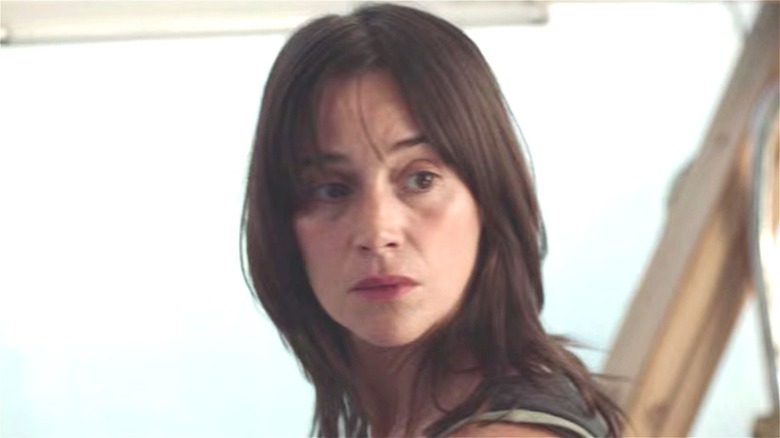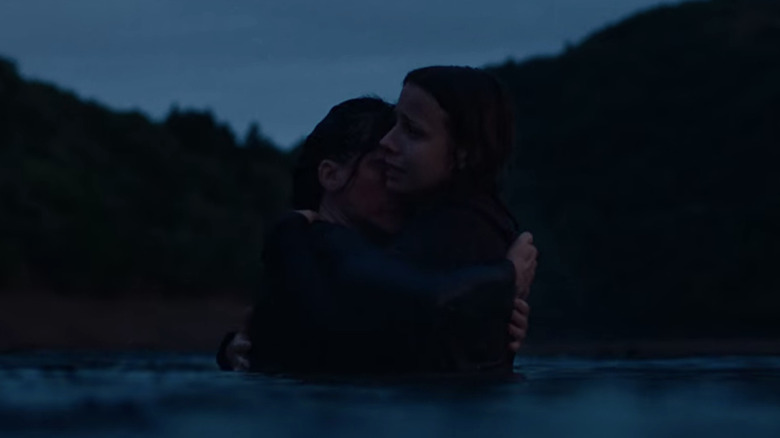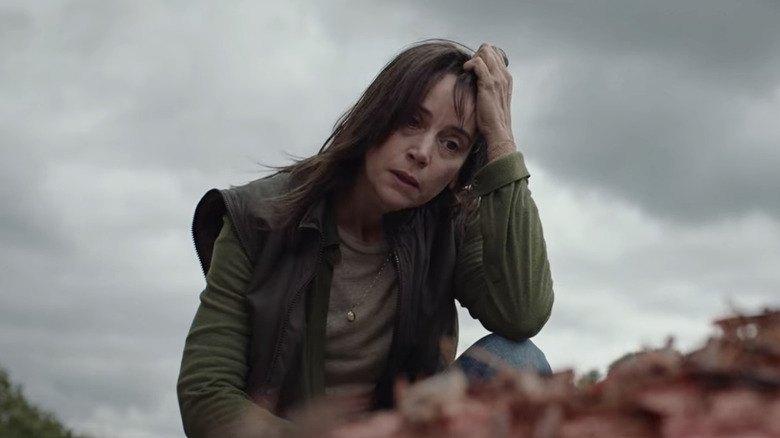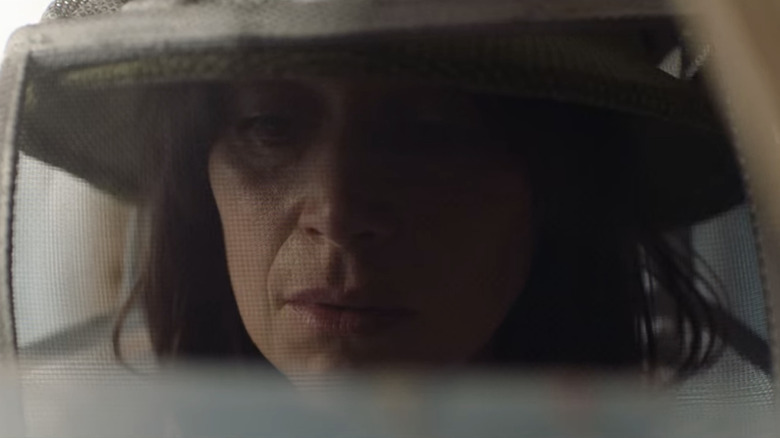The Ending Of Netflix's The Swarm Explained
Netflix's latest horror movie "The Swarm" has viewers bugging out — literally.
The French horror drama centers on a single mother named Virginie Hébrard (Suliane Brahim) who lives in the French countryside with her children Laura (Marie Narbonne) and Gaston (Raphael Romand). Virginie raises locusts as a high-protein food source, but isn't able to get them to reproduce as much as she needs them to. One day, Virginie realizes the locusts have an odd appetite — for blood. "The Swarm" gets more horrific and creepy as Virginie does whatever it takes to keep the locusts happy, no matter the cost.
"The Swarm" is earning favorable reviews from critics, with Richard Brody of The New Yorker writing, "What Alfred Hitchcock did for birds the French director Just Philippot does for grasshoppers in this extravagantly eerie, rootedly practical horror film." While the film is a bit of a slow burn, the wait is worth it as it culminates in a terrifying ending that will leave you shaken.
Here's the ending of "The Swarm" explained.
An abrupt ending
At the end of "The Swarm," it seems like all hope is lost — multiple people are killed and eaten by locusts, Laura is being chased by an angry mob of insects, and Virginie takes way too long to come to her senses. Eventually, Laura is chased to the edge of a lake, where she takes an old boat out onto the water and hides underneath it. Unfortunately for her, the locusts are too hungry to let a boat get in the way, and they continue to attack her.
Finally, Virginie realizes the reality of their horrific situation, and sacrifices herself for her daughter's safety. She cuts her hands and rubs her blood all over her face to entice the locusts to her, and they quickly fly over and forget about Laura. Laura then rushes from her hiding place to find her mother being swarmed by the insects, until Virginie goes underwater — and the locusts appear to follow her in, drowning immediately. Virginie and Laura reunite while thousands of locusts float in the murky water.
How did the locusts die? Did they fall asleep with full stomachs after drinking blood, only to accidentally drown? Or were they so driven by their hunger that they plunged into the water without a thought? It's not quite clear how the critters came to their untimely end, but at least "The Swarm" ended on a somewhat positive note.
The Swarm contains social commentary
Aside from the obvious horrific tale at the center of "The Swarm," the movie also manages to tackle some social issues, including the harm done by the agricultural industry. As Guillem Martinez Oya of Cinematismo wrote, "Just Philippot confronts us, in a situation where tension is constant, with the food dilemma of tomorrow that, in reality, is today ... A film where the contrast of nature is highly poetic and terrifying for its landscapes and for the performance of the animals that inhabit them. '[The Swarm]' is an allegory of the way we have approached, for centuries and badly, livestock."
Just Philippot, the director of "The Swarm," echoed those comments in an interview with Cineuropa. He revealed that when he agreed to direct the film, he did so on the condition that he be allowed to adjust the script as needed. "Because it wasn't just about making a genre film," he explained "There also needed to be a credible discourse about the characters' issues and personalities, about the film's vision of the world and society, about all these background questions which were already in the script. 'The Swarm' is also political, not just a fantasy film or a genre film."
A modest proposal
While some Western viewers may find the idea of eating insects unusual, it's been done for years in countries like Morocco, Greece, and Pakistan (via This is Mold). As portrayed in "The Swarm," Locusts are in fact high in protein, as well as fat, phosphorus, and energy, according to research done at the University of Khartoum. Historically, people ate locusts after swarms ravaged cities, like the 1960s infestation in Old Delhi, during which people captured locusts and "sautéed them in ghee, sprinkled on them some dry masala," and ate them for snacks (via The Hindu).
With this in mind, it doesn't seem too far-fetched that more people would start to eat locusts if their cities were hit with infestations, or people like Virginie would begin to raise locusts for food. In fact, food-grade insects are already being raised around the world as a more sustainable food source than chicken, beef, or pork.
The practice of eating wild locusts isn't without real danger. The prevalence of harmful pesticides in the environment — especially the agricultural environment — has laced many of these wild locusts with dangerous toxins. According to Mold, "Threatened by food shortages and drastic loss of livelihoods, governments have chosen to use toxic pesticides and insecticides to kill swarms of locusts. Some of them are known neurotoxins, and chemical residues even after cooking the locust can cause severe health issues to anyone consuming it. It would be difficult to identify the toxicity of the insects at a household level."
Though eating locusts seems like a good solution for cities overcome by the pesty insects, the future envisioned by Philippot in "The Swarm" may not be quite on the verge of coming to pass ... yet.



